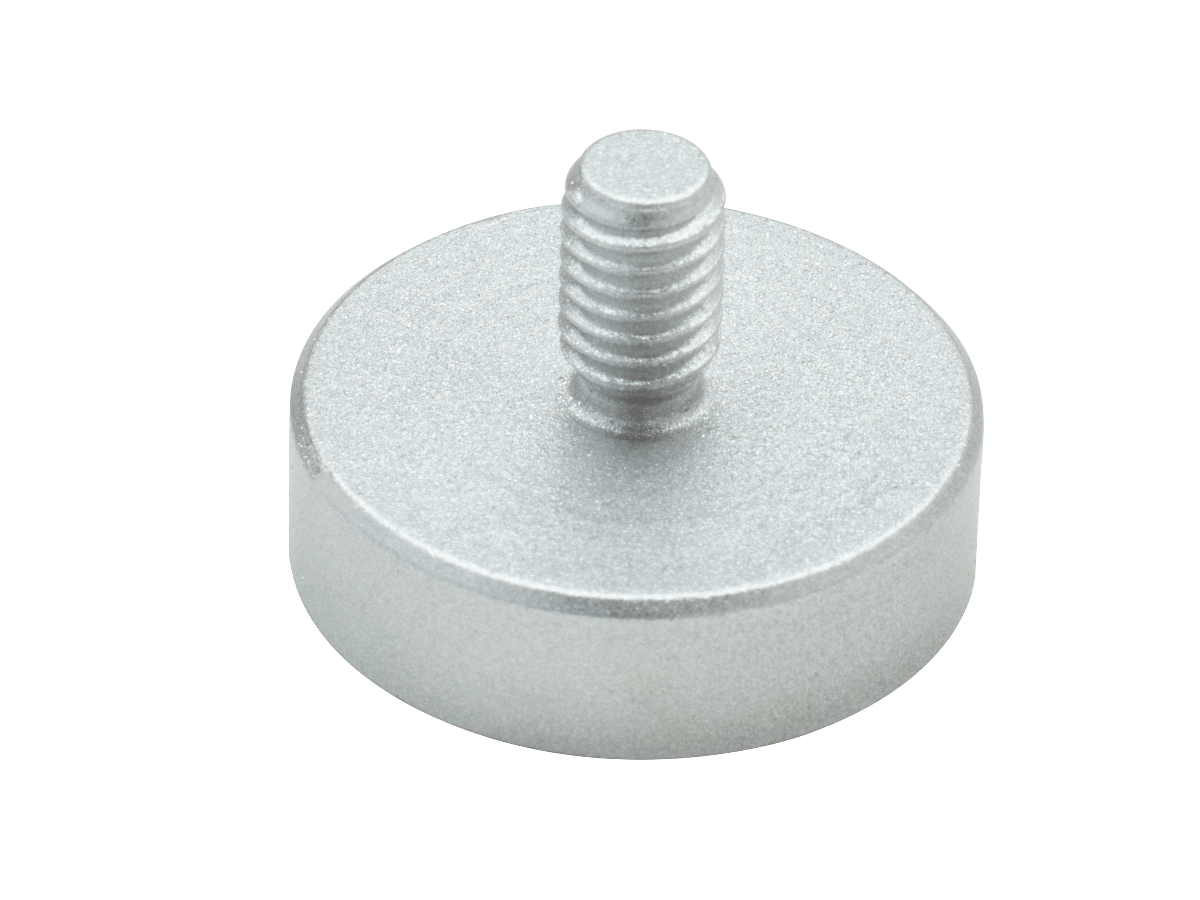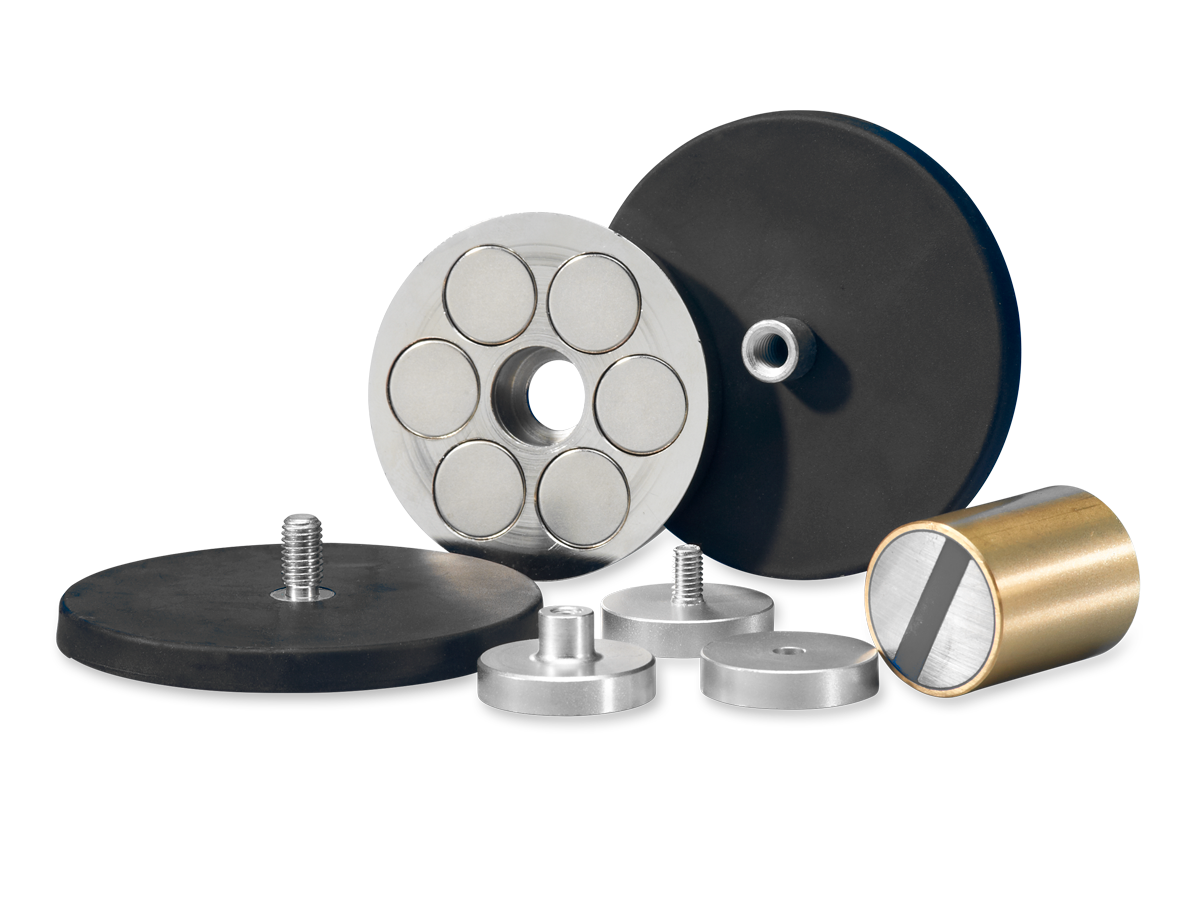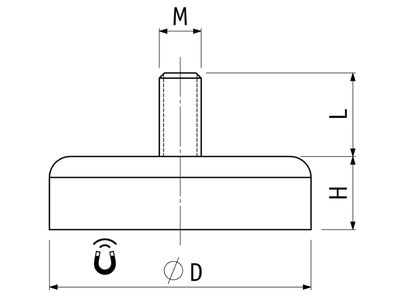Pot magnets with threaded end
Search results
Uw resultaten in: pagina's, producten en documenten
Scrol om alles te zien. Heeft u niet gevonden wat u zocht? Probeer een andere zoekterm of neem contact met ons op.
Geen resultaten gevonden

-
{{filter.Description}}
({{filter.UOMDescription}})








No results found
Uw resultaten in: pagina's, producten en documenten
Scrol om alles te zien. Heeft u niet gevonden wat u zocht? Probeer een andere zoekterm of neem contact met ons op.
Neodymium pot magnets
Composition and construction of NdFeb pot magnets
These super-strong pot magnets are made of the alloy neodymium-iron-boron - (NdFeB) - which Goudsmit markets under the brand name Neoflux®. The shell provides magnetic shielding. Goudsmit supplies neodymium pot magnets with a brass or steel shell. The holding surface is covered with a protective coating to prevent corrosion.

Operating temperature and loss of magnetic strength
Neodymium pot magnets have a maximum operating temperature of up to 80 °C. When heated to this temperature, the magnet loses 15 to 20% of its magnetic force. This is not permanent; the force is restored when the magnet returns to the normal ambient temperature.
External magnetic fields may also cause loss of magnetic force. An air gap or non-magnetic materials located between the magnet and workpiece reduce the tensile force.

Ferrite pot magnets
Composition and construction of ferrite pot magnets
Good magnetic properties, affordably priced. Ferrite pot magnets, also referred to as ceramic pot magnets, are fitted with a steel pot that provides shielding of the magnetic field. Ferrite pot magnets require only a minimal installation height. This provides constructive advantages.
Ferrite pot magnets are corrosion-resistant and therefore do not require additional coating on the magnet surface.
Operating temperature and loss of magnetic strength
Ferrite pot magnets have an operating temperature of up to 200 °C. When heated to this temperature the magnet loses 30 to 40% of its magnetic force. This is not permanent; the force is restored when the magnet returns to the normal ambient temperature. The magnetic force of these pot magnets is lower than that of neodymium pot magnets.
External magnetic fields may also cause loss of magnetic force. An air gap or non-magnetic materials located between the magnet and workpiece reduce the tensile force.



Compact magnet systems with a steel shell and with a threaded end for easy mounting. Thanks to the shell of these magnet systems, the magnetic field strength increases and the pot magnets are more resistant to corrosion or chemicals. Pot magnets have a single attracting surface. This precludes dispersion of the magnetic field.
Pot magnets with threaded end are available in various sizes in neodymium and ferrite.